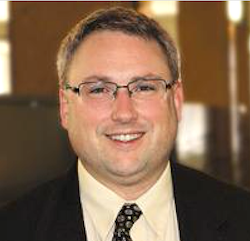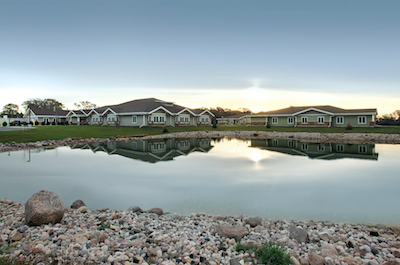
You’ve likely heard a coach or keynote speaker use the phrase “Go big or go home!”
It’s meant to encourage the listener to go all the way or to be extravagant. As you consider growing the footprint (and impact) of your senior living community, however, consider phasing your project, and be mindful of the risks that are present.
Phasing might mean offering one service type at a time, such as independent living, assisted living or skilled nursing. It also might be achieved by developing a wing, or constructing one new building at a time, despite the plan to open many more.
It’s not wise to “go big” or take on too much if the risks are too great. Phasing often is the right approach after considering the financial, staffing, market and quality risks that are prevalent in the senior living market today.
Proven solution
 An exceptional example of effective phasing involves a senior care provider in Wisconsin. This organization is working toward opening a second campus near its original one. The first phase is 30 units of skilled nursing.
An exceptional example of effective phasing involves a senior care provider in Wisconsin. This organization is working toward opening a second campus near its original one. The first phase is 30 units of skilled nursing.
For this provider, phasing isn’t a new approach. It has proven to be a successful solution throughout its nearly 50-year history.
The original campus was established and developed over the years, starting with skilled care and then growing into assisted living and independent living over several phases. This approach placed the operator in a financial position to take the next step to create a second campus.
For the new campus, the first step of a planned continuum-of-care community is a 30-bed skilled nursing and rehabilitation center. Eventually, the community will add independent living apartments, assisted living apartments and memory care.
Financial risk
With any construction or renovation project, financial considerations are central to the decision-making process. When phasing a project, the total financed over the years certainly may be greater than if the campus had been completed in just one phase.
On the positive side, however, segregating a large project into smaller ones will incrementally limit the amount of financial exposure. Should a mistake be made in a development assumption, you will have minimized the financial loss rather than over-extending your entire financial structure.
Another benefit of phasing is that smaller ventures can be executed more quickly, leading to a faster return on investment.
Staffing risk
Many senior living leaders claim that finding quality staff is their top priority and greatest challenge. By phasing a project, operators can address their concerns of finding qualified help by gradually increasing their staffing model — the smaller the development phase, the fewer new staff members to be recruited, brought on board and trained at one time.
This certainly was true for the previously mentioned Wisconsin provider. One of its key drivers for creating a second campus versus expanding its current site was the ability to attract new staff. Already experiencing challenges with obtaining local talent, the operator developed a wise alternative. Rather than recruit staff from further away, which would create new issues and stresses on both leadership and staff, it decided to bring the work to a different community and create a new campus 20 miles away.
A staffing-related risk also exists with current employees. The larger the project, the more hours it will take to plan, design, approve and implement. Those responsibilities fall on leadership teams — with member schedules already full with day-to-day operations, creating another staffing risk. Keeping a project smaller often keeps the responsibilities within a reasonable scope and does not overwhelm key personnel and distract them from their daily responsibilities.
Market risk
If we had a crystal ball, then development would be easy! With the fluctuating healthcare climate, regulation adjustments, reimbursement changes and more, however, it’s beyond difficult to predict what will need to take place in 15, 10 or even five years.
Developing incrementally allows senior care providers the flexibility to adjust to the ever-changing market demand. If a project is completely developed at once, then you are potentially locking your campus into pre-determined lines of services to some extent, with less flexibility and opportunity to adjust to the market.
Some forward-thinking providers have taken the approach to continually be in a stage of development on their campuses for 10 to 15 years. Each step is an adjustment to the needs and demands in the marketplace, constantly considering levels of care and programs such as memory care, hospice, etc.
Another benefit to the phased approach is that you have a longer lead time to ramp up and grow organically. You are not trying to fill a facility — one that has perhaps doubled in size — all at once.
Quality risk
When looking at creating a larger development, you may be considering providing several areas of care. With a smaller project, you can focus on the one thing that you are trying to do well.
Leadership author Jim Collins, in his seminal book, “Good to Great,” presents the Hedgehog Concept. This is the concept that will guide all efforts based on what you can be best at in the world, that drives your economic engine and that you are deeply passionate about.
With our Wisconsin senior care provider example, its core history is in skilled nursing. Its focus in phase one at the new location is to build the best 30-bed skilled nursing home possible (an approach it is an expert at and can do quickly), knowing it can grow from this base in the future.
The next phase is forecasted to be a memory care assisted living facility — a new endeavor for this operator. After phase one is completed, the provider will be freed up to focus on how to best run a memory care unit. This approach will minimize distractions that future phases hold.
Phasing for rewards
Be sure you adopt a logical, disciplined process that looks at your organization and the market as a whole. After carefully considering the financial, staffing, market and quality risks, you’ll be prepared to determine whether you want to “go big or go home” or phase your project, take more a calculated risk and reap the subsequent and incremental rewards.
Kevin Madalinski is director of construction services for Hoffman Planning, Design & Construction Inc. With an undergraduate degree in architectural engineering from the Milwaukee School of Engineering, he has almost 25 years of construction management and engineering experience. Madalinski has partnered with more than a dozen senior living providers, collaborating on more than 20 facility-related design and construction projects nationwide.
McKnight’s Senior Living welcomes guest columns on subjects of value to the industry. Please see our submission guidelines for more information.




